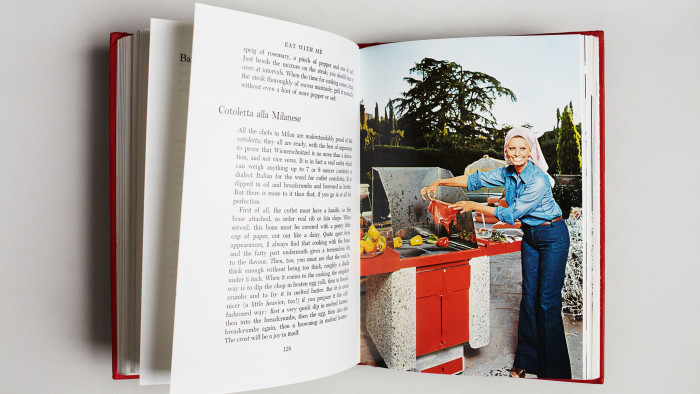‘Eat with Me’ by Sophia Loren

Roula Khalaf, Editor of the FT, selects her favourite stories in this weekly newsletter.
Eat with Me by Sophia Loren
Rizzoli Editore, 1971 (published in the UK 1972)
Decades before we had Nigella, there was the beautiful Sophia. Lawson may have made cooking sexy in the noughties, but Sophia Loren got there first when she published her “gastronomic autobiography”, Eat with Me.
The book was first published in Italy in 1971 as In Cucina Con Amore, a title that proves irrefutably that Romance languages are indeed more romantic than their northern European equivalents. The message is clear – this is an intimate invitation, not to be missed.
Born Sofia Villani Scicolone in 1934 in Rome, at the age of 14 Loren entered the Miss Italia beauty contest, enrolled in acting classes and launched her career a few years later with a bit-part in Mervyn LeRoy’s 1951 film Quo Vadis.
Explaining how Eat with Me came about, Loren makes good on the title’s promise of the personal. During a much-wanted pregnancy, Loren found herself under orders “to avoid any fatigue at all”. Working with “her faithful secretary”, she started experimenting with dishes and writing recipe notes. The end result, explains Loren, “is dearer to me than any successful film because it takes me back to the nerve-wracking days which came to a climax in the birth of Carlo, Jr, the greatest joy of my life”.
Loren’s lengthy “digressions” in Eat with Me may seem “a little out of place in a book of cooking recipes”, she explains. “But in fact they will help you to understand me better and my views on food and cooking.” And so she implores smokers to consider their fellow diners, she recognises that tinned and frozen food have their place and, refreshingly, she urges men to cook.
The written content of Eat with Me is entertaining if atrociously translated, but the full-page colour photographs are the book’s biggest draw. Here is Loren, stylish in a wraparound dress, straddling a 5ft display of pâté while simultaneously patting the heads of two live pheasants. And here again is the film star with immaculate hair and make-up slicing onions alongside a female cook half Loren’s height and double her width. Loren, cook-housewife-goddess, triumphs.
Inspired by “childhood memories, memories of travels and instructions from cooks from all over the world”, Italian food dominates: antipasti such as “Aubergine Mayonnaise Crostini” and “Bruschetta”; meat in the form of “Polpette” (meatballs) and “Stew Italian Style”.
But Loren does not pretend to spend her days at home in the kitchen. Cooking here is carried out by a “wonderful cook” called Livia. Only when the film star “really wants to show a particular interest” in a guest does she cook a dish “with my own hands”. This admission, and the presentation of Loren as desiring and desirable, are reminders that to be a woman is a part to be played – something that Lawson, with an ironic, feminist wink would later come to embody as the nation’s “domestic goddess”. Eat with Me was a taste of what was to come.
Polly Russell is a curator at the British Library; ‘Eat with Me by Sophia Loren’ by kind permission from the British Library collection.
To comment on this article please post below, or email magazineletters@ft.com
——————————————-
Spaghetti with bay leaves
I met [sic] this spaghetti at a friend’s house when he gave a dinner to celebrate my Oscar in 1961 for Two Women. Instead of offering me a victor’s laurel crown, he said he would much rather offer the laurel (known as bay leaves in the kitchen) at the table. I must say his idea couldn’t have been better, and I insisted on having the recipe as well.
For six people
● Heat 4 tablespoons of olive oil in a pan with a pat of butter; into it slice a good-sized onion, or two medium-sized ones. Cook until the onions look transparent, then add 10 ounces of coarsely chopped, peeled (or drained tinned) tomatoes, a dozen bay leaves, a pinch of salt, a pinch of ground pepper, and ½ teaspoonful of cinnamon. Leave it cooking for ten minutes so the aromas blend. The result will be a lively and very exotic sauces sufficient for 1lb 4oz of spaghetti.
Comments